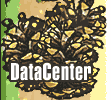The Derby Green is a rectangle situated on a knoll in downtown Derby just north of the commercial district. It is bordered by Minerva Street on the east, Fifth Street on the north, and Elizabeth Street on the west. A wide foot path separates it on the south from "Katzen's Plaza on the Green," a two-story, red brick commercial building constructed in the second half of the 20th century on the site of Fourth Street, which originally bounded the green on the south.
The Civil War monument, erected in 1883, is located at the highest point of the green, and therefore becomes the most prominent object on the green. It is made up of a bronze statue of a soldier facing west, standing on a granite and concrete base. A cannon is located at each of the four corners, facing diagonally out. A plaque reads, "In memory of the men of Derby and Huntington who fell in the service of their country in the War of the Rebellion, 1861-1865, as defenders of liberty and nationality."
Other monuments placed on the green include a large bell fabricated in Baltimore in 1887 and placed on a cement base to commemorate Derby firemen; a stone pillar about seven feet tall placed in a hexagonal concrete planter between two large shrubs and "Dedicated to the memory of the Veterans of Derby, Connecticut, World War One, World War Two, Korean War and Vietnam;" a water fountain dedicated to a local citizen named Albert Yudkin; and a time capsule buried in 1975 to be unearthed in 2025.
A flagpole is located at the center of the green where the paths converge. Street lights on tall steel poles are situated throughout.
A tight wall of buildings evenly set back from the street frames the green. Three churches grace the sides: at the center of the west side, the Second Congregational Church, a frame Greek Revival structure with Colonial Revival alterations; opposite it on the east, Saint James' Episcopal Church, an early Gothic building of stone with a battlemented tower; and on the north, the Derby United Methodist Church, an expansive Richardsonian Romanesque structure of red brick with brownstone trim and large stained-glass windows. Across from the southwest corner stands the Sterling Opera House, a monumental brick-and-stucco building erected in 1889, which served as city hall until the 1950s; it appears to be empty now. Most of the remaining buildings around the green are houses dating from the second half of the 19th century, several of them stripped of original detailing. There are three exceptions: the State Supreme Court building on the west side, behind the Opera House; a gas station diagonally across from the green at the northwest corner of Fifth and Elizabeth Streets, and a one-story commercial building (currently a restaurant and eyeglasses shop), at the southwest corner of the same intersection. Katzen's Plaza, on the south side, faces another street; the face it presents to the green is a two-story blank brick wall behind a one-story screen of pierced concrete blocks.
The streets surrounding the green are two lanes wide. Parallel parking is allowed on both sides of each street, with the exception of Minerva Street, where diagonal parking is allowed on the west side, next to the green.
A granite retaining wall lifts the green one or two feet above the surrounding sidewalks. The terrain is sloped, and rises to its highest point near the northwest corner. The green is dotted with mature trees -- mostly maples -- and some small shrubs, located around the edges and along concrete paths that radiate from the midpoint of the green to its corners and to the centers of the west, north, and east sides. These curbed paths, lined with wooden benches, are a major feature of the green. At the southern end is a recent bandstand, a hexagonal wooden structure with plain posts, a plain railing, and a pointed roof. A low granite marker dedicates it to veterans of the Korean and Vietnam Wars.






![]()